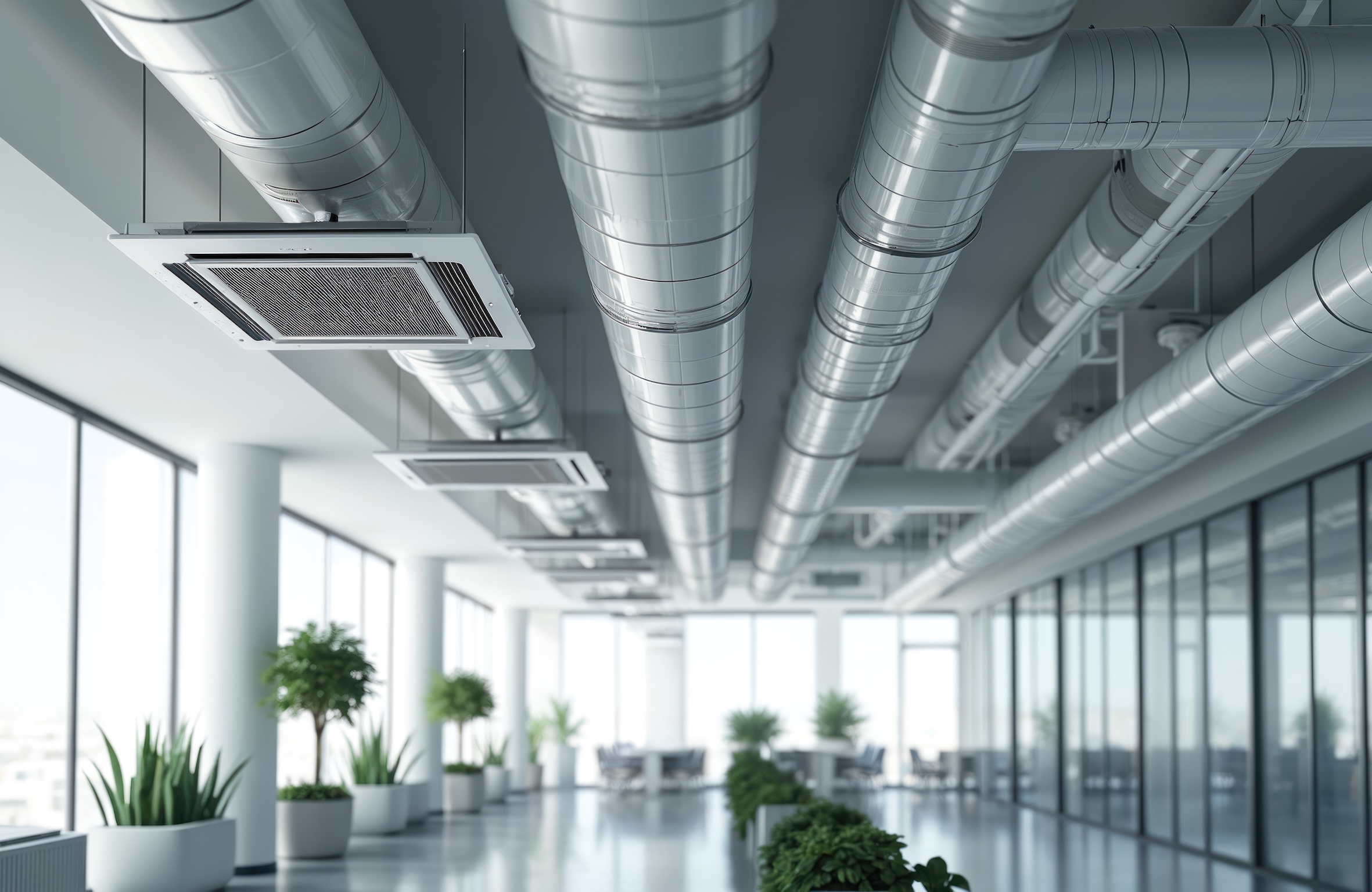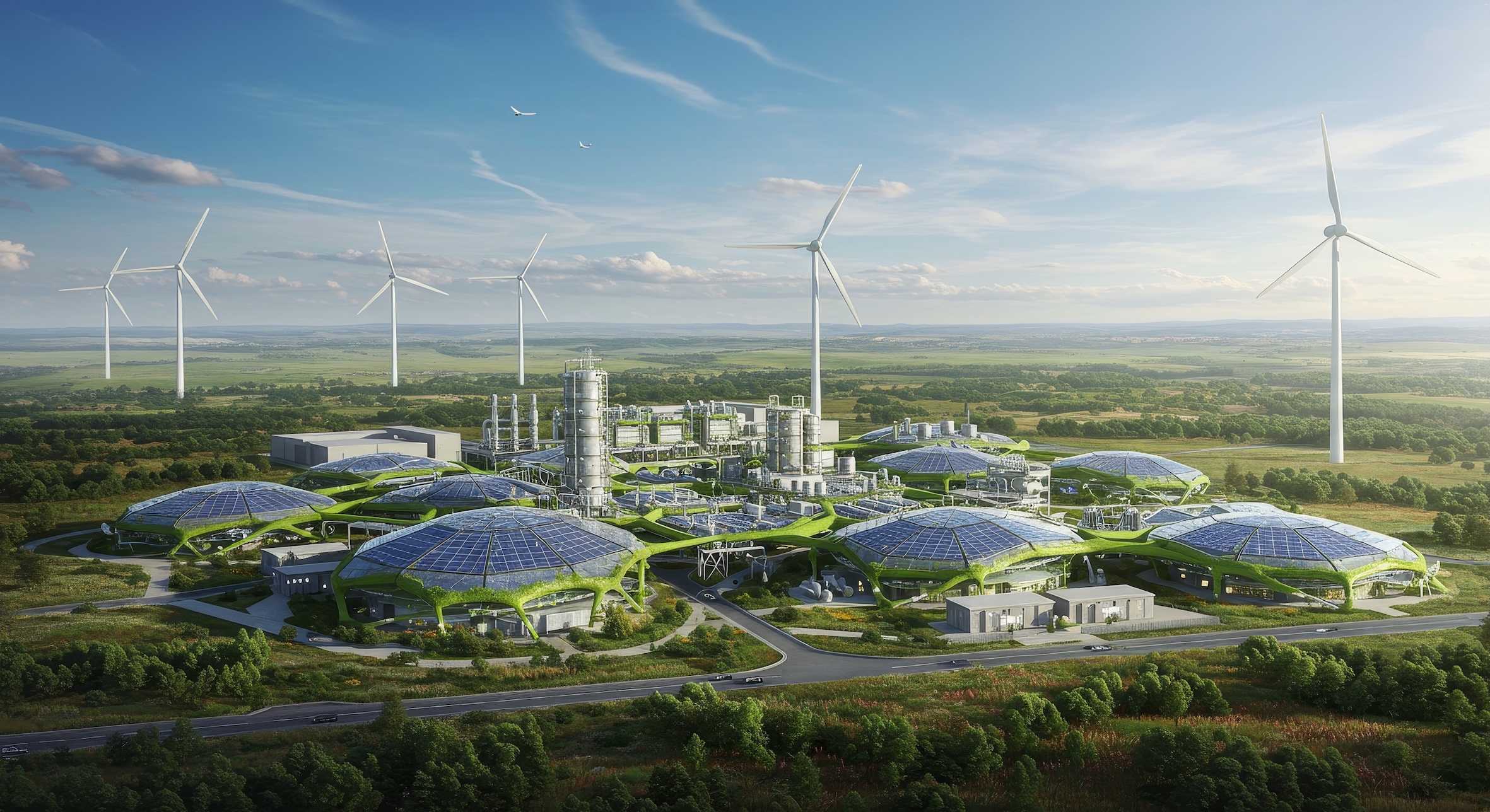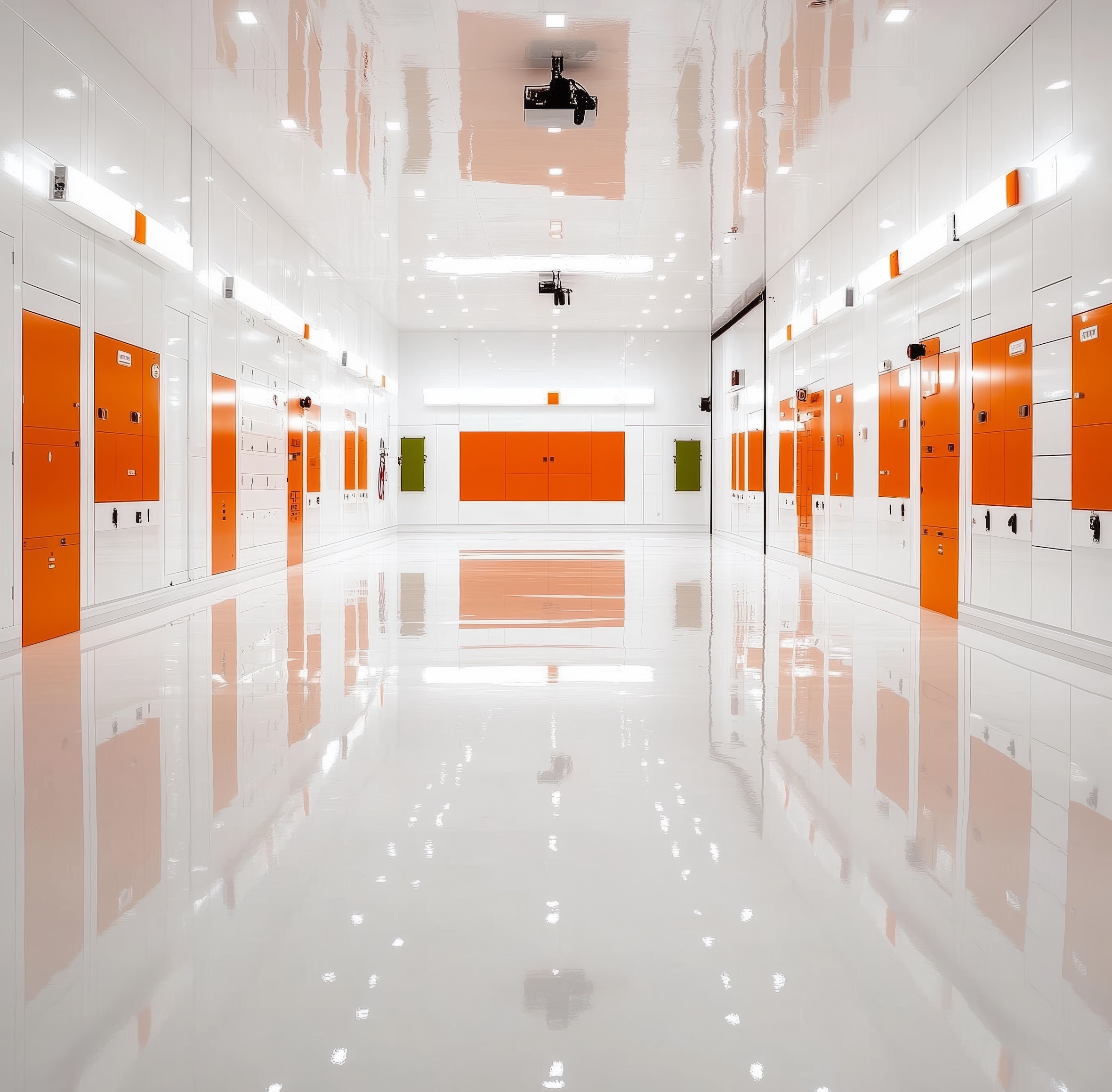HVAC systems are complex and made up of devices, pieces of machinery, pipes, fans, filters, control mechanisms and vents which work together to handle and distribute air throughout an enclosed space.
Their purpose is to purify the air, but also to ensure quality in terms of thermal comfort (heating/cooling/heat recovery), hygrometric comfort (humidification/dehumidification) and air movement (ventilation).
HVAC systems are sophisticated structures that can be found everywhere: hospitals, offices, schools, universities, hotels, residential facilities, nursing homes, shopping arcades and buildings in general where there is high influx of people.
It goes without saying that cleaning and sanitising operations (as well as general upkeep) are of the utmost importance in keeping these systems running smoothly and ensuring that they are not detrimental to human health.
The difference between a ventilation system and an HVAC system
From a technical point of view, HVAC systems are more complete than ordinary ventilation systems. The former manage the indoor climate of a room in every respect while the latter simply change the air. Here are two real examples to underline how these two installations differ.
- An office HVAC system works thus: it takes air from the outside, filters it, lowering the temperature in summer and raising it in winter to keep the building occupants either cool or warm and distributes the air throughout the various rooms through a network of ducts, recovering heat from the expelled air (via special heat-recovery units) in order to save energy.
- When we think of a ventilation system, what we have in mind is a ventilator or fan in the bathroom which comes on with the light switch and pushes damp air outside. Its sole purpose is to stop mould and humidity from building up.
Why it is so important to keep the system clean and in good order
It is crucial to periodically clean and sanitise the various parts of an HVAC system using specific procedures and products for many different reasons:
- It makes sure that the air inside a room is not contaminated. Over time, HVAC ducts, filtering systems and other parts can become clogged with dust and turn into a breeding ground for mould, fungus, viruses, bacteria and allergens, triggering allergies, asthma, chronic sinus infections, bronchitis and respiratory problems.
- It maintains efficiency levels and prevents wastage. Dirt and debris obstruct the airflow, causing the fans to overwork. This results in a greater energy consumption and more wear and tear.
- To comply with laws and regulations meant to protect indoor occupants, especially in the healthcare sector.
Step 1 – cleaning HVAC systems
There are two main ways to restore operational functionality to HVAC units and get them back into working order: cleaning and sanitisation.
Cleaning involves the mechanical removal of dust and debris from pipes and the air-handling unit (AHU). There are three popular ways to do achieve this:
- Blowing.
- Brushing (this is the most frequently used technique) which takes place with a rotating brush. This piece of equipment passes through the ducts (properly sealed to prevent any leakage), removing debris and residue. There is an alternative to rotary brushes: robots. They are equipped with a camera and guided by operators on the premises who control the cleaning operations with joysticks.
- Compressed air.
Regardless of the kind of system or the various combinations that vary according to the individual features of each HVAC unit, it will also prove necessary to use a vacuum-cleaner attachment to blow the debris out and leave the ducts clear.
The AHU should be dealt with separately using a pressure washer and water as well as a series of chemical products for degreasing, descaling and disinfecting.
Step 2 – sanitisation
Once the various parts of the distribution network have been cleaned (including the grilles and vents), it is time to sanitise the system.
The purpose of this step is to eliminate any contaminants or pollutants by spraying on specific sanitising products. This will ensure that the bacterial load is kept at an optimal level.
In a nutshell, a clean system is always better
HVAC maintenance and cleaning must be carried out periodically by industry professionals and this will keep the system running smoothly and efficiently, contributing significantly to a reduction in consumption as well as to lower costs for long-term equipment management.
But, most importantly of all, it guarantees that building occupants breathe in clean air and enjoy a healthy indoor environment, a positive outcome for everyone involved.





